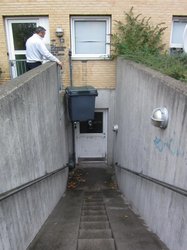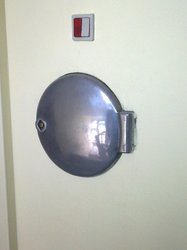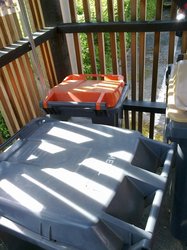


| Project lead ENVS : | Lars Kjerulf Petersen |
| Staff: | Student assistants Pernille Bank Friis and Pernille Larsen |
| Financed by : | Municipality of Copenhagen |
| Budget : | 216.000kr |
| Duration: | March-December 2017 |
Aim and background
The aim of this project was to investigate how source separation of household waste in apartment buildings may be affected by garbage chutes and other elements in the buildings’ waste handling infrastructure. The background for this investigation was firstly that the municipality wanted greater flexibility in building regulations regarding building infrastructure for waste handling. They wanted to abandon the fixed demand that garbage chutes must be part of all new building. Secondly, the municipality launched in the autumn of 2017 a new scheme for separation of bio-waste in all apartment buildings throughout the city, which will reduce the need for garbage chutes because they cannot be used for that waste fraction. Thirdly, the municipality has greatly increased its ambitions for source separation and waste recycling over the past 5 years, and it wants to improve its advice to citizens, building owners and building caretakers regarding waste management.
Methods
The investigations consisted of a (a) questionnaire survey distributed to the municipality’s own on-line citizen panel, (b) visual registration of waste volumes and erroneous separation in 15 select buildings, and (c) interviews with residents and building caretakers in (most of) the same buildings.
Results
The study shows that there is no discernible difference in source separation between buildings with and buildings without garbage chutes. However, the quality and quantity of source separation is affected by the waste handling infrastructure. Even when residents in general support waste recycling, which is the case for up to 80 % of the population – a finding that is supported also in other studies – the location and design of waste bins and other waste handling equipment, the routes that are laid out for residents for transporting their waste, and the information that is provided does affect the amount of separated waste and of erroneous separation.